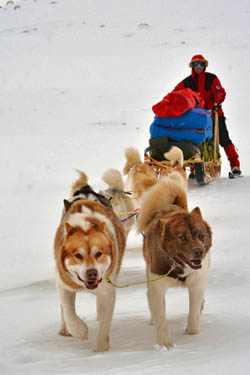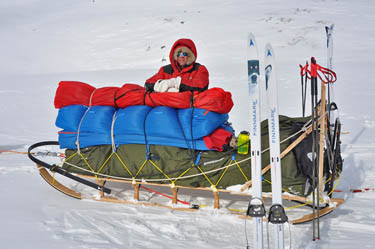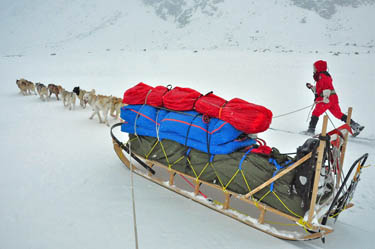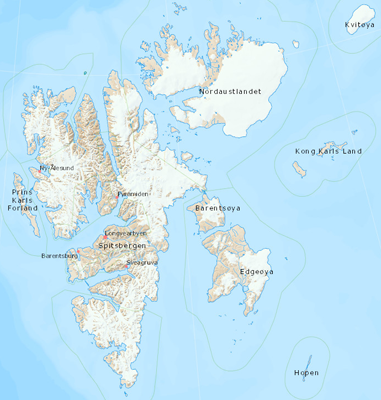In this Post
From the
Editor
The Aboriginal Dog as a Domesticate
Neuroanatomy and Behavior Correlations
Specialized Sledge Dogs Accompanied Inuit Dispersal Across the North American Arctic
Cold Case Reopened and Other QIMMEQ News
Langsomt på Svalbard (Slowly on Svalbard)
Frossen Frihe (Frozen Freedom)
Restoring a Historic Nansen Sledge
Media Review: Kamik, an NFB documentary
IMHO: A View from Across the Divide
The Aboriginal Dog as a Domesticate
Neuroanatomy and Behavior Correlations
Specialized Sledge Dogs Accompanied Inuit Dispersal Across the North American Arctic
Cold Case Reopened and Other QIMMEQ News
Langsomt på Svalbard (Slowly on Svalbard)
Frossen Frihe (Frozen Freedom)
Restoring a Historic Nansen Sledge
Media Review: Kamik, an NFB documentary
IMHO: A View from Across the Divide
Navigating This Site
Index of articles by subject
Index of Journal editions by
volume number
Index of PostScript editions by publication number
Search The Fan Hitch
Articles to download and print
Ordering Ken MacRury's Thesis
Our comprehensive list of resources
Defining the Inuit Dog
Talk to The Fan Hitch
Shop & Support Center
The Fan Hitch home page
Index of articles by subject
Index of Journal editions by
volume number
Index of PostScript editions by publication number
Search The Fan Hitch
Articles to download and print
Ordering Ken MacRury's Thesis
Our comprehensive list of resources
Defining the Inuit Dog
Talk to The Fan Hitch
Shop & Support Center
The Fan Hitch home page
Editor's/Publisher's
Statement
Editor: Sue Hamilton
Webmaster: Mark Hamilton
The Fan Hitch Website and
Publications of the Inuit Sled Dog– the
quarterly Journal (retired
in 2018) and PostScript – are dedicated to the aboriginal
landrace traditional Inuit Sled Dog as well as
related Inuit culture and traditions.
PostScript is
published intermittently as
material becomes available. Online access is
free at: https://thefanhitch.org.
PostScript welcomes your
letters, stories, comments and suggestions.
The editorial staff reserves the right to
edit submissions used for publication.
Contents of The Fan Hitch Website and its publications are protected by international copyright laws. No photo, drawing or text may be reproduced in any form without written consent. Webmasters please note: written consent is necessary before linking this site to yours! Please forward requests to Sue Hamilton, 55 Town Line Rd., Harwinton, Connecticut 06791, USA or mail@thefanhitch.org
Contents of The Fan Hitch Website and its publications are protected by international copyright laws. No photo, drawing or text may be reproduced in any form without written consent. Webmasters please note: written consent is necessary before linking this site to yours! Please forward requests to Sue Hamilton, 55 Town Line Rd., Harwinton, Connecticut 06791, USA or mail@thefanhitch.org
Background
As a Norwegian with a penchant for polar exploration, arctic cultures and arctic travel, going to the arctic is a natural thing to do. In Norway, Svalbard is our closest available “real Arctic”. Being a stubborn, self-reliant, back-country experienced Inuit Dog owner, means you can’t, or at least you won’t, do it as a traditional tourist, but must do it all on your own terms.
Svalbard is a Norwegian archipelago in the Arctic Ocean. Situated north of mainland Europe, it is about midway between continental Norway and the North Pole. Svalbard is an old whaling, trapping and hunting area, a historic and modern mining area, and has been thoroughly searched for other minerals, including test drilling for gas and oil.
Svalbard is also, still, largely pristine wilderness, a rough, barren landscape, almost void of life large parts of the year. In the summer Svalbard is breeding ground for about 80 species of birds, primarily seabirds, but the Svalbard rock ptarmigan also lives on Svalbard year-round. There are only two naturally occurring terrestrial mammals, the Svalbard reindeer and the arctic fox. In the seas surrounding Svalbard there are upwards to 20 marine mammals such as whale, walrus, seals and polar bears, the latter having large densities parts of the year.
Svalbard has an arctic climate, though surprisingly mild temperatures compared to areas of Canada or Russia at the same latitudes. This is an effect of the North Atlantic Current, and as a result Svalbard is maybe the arctic area that is most affected by climate change. For more on Svalbard, consider reading this Wikipedia article.
My way
My way of experiencing Svalbard is back-country travel by dog sled. My experience and stubbornness mean I have no desire go on an ordinary guided trip but choose to do it as a private endeavor. Luckily, I won’t be going completely by myself, but will be accompanied by my good friend Jens Otto Nørbech-Eidem and my trusty team of Greenland Inuit Dogs.
Our general plan is to fly to Svalbard during the last week of March, spend most of April in the field, and return to mainland Norway at the very end of April. This leaves us with four weeks of sledding in Svalbard’s arctic wilderness.
Preparations for a journey like this can literally take your breath away, especially if you try to do it all at once, but is more bearable if done over a longer time span. Jens and I have been working towards this trip for more than three years now, planning possible routes, acquiring gear, planning logistics etc. But the size of it all still feels staggering, and though we personally don’t consider it an expedition, for all intents and purposes it still is.
Both Jens and I are experienced in back-country and mountain travel in winter. We have known each other and traveled together for more than 15 years now. We have compatible personalities and have no trouble living cooped up in a small tent for days and weeks at a time.
Preparations
When planning a journey like this, there are so many details and different bits and pieces that it’s hard to keep track of them all. The big ones are easy to remember, all the lesser ones are on one of our many check lists.
Some of the bigger ones are: Dogs, sled, tent, sleeping bags, clothing, ski equipment, dog food, man food, polar bear safety etc. etc. etc. Here are a few of them in more detail:

Having no dogs of his own, Jens has over the years become
a skilled musher with my dogs. Photo: G. Uren
Dogs – We are bringing along eight Greenland Inuit Dogs, aged from 8 years down to 18 months. All are bred by me, six of them raised by me, two of them have returned “home” as adults. The six who have grown up here live as a well-functioning family pack, the other two are hang-arounds not quite able to reintegrate to the pack. The dogs are well trained, hard-working and backcountry experienced, even the two youngest, now 18-month-old siblings. All are just the type of dogs to bring on an arctic journey.
All new dog gear is on this trip is from Norwegian Troll a producer and vendor of dog gear. They have one of their three stores in Røros, so are familiar with me and my dogs.
Sled – Our sled is a large Nansen sled. This type of sled was originally designed by Norwegian explorer Fridtjof Nansen in 1888. The design is superb, and this type of sled has been used by many major expeditions since: Amundsen, Sverdrup, Scott, Shackleton, Mawson, FIDS/BAS and many others.

Gisle proudly showing off the homemade Nansen sled during
an 8-day field test. Photo: G. Uren
Our sled is home-made, built from self-harvested, self-split, air dried ash. It was built January-March 2019 and field tested on an 8-day training journey through the Skarvheimen mountains of Norway. It works like a dream and while fully loaded it was easier to handle than we could ever have imagined.
Tent – Our tent is a slightly modified Norwegian-made expedition tent, the Helsport Spitsebergen X-trem Camp. Advertised as a four-man tent, we find it suits us two and our gear just perfectly. Our modifications are factory made and consist of a “chimney” placed at the apex of the tent to help ventilate moisture, and a few extra guy lines to stabilize even better in severe winds. We will also be using a double pole set, giving twice the strength to each “pole” in severe weather.
Jens and Gisle enjoying a nice evening in the Skarveheimen mountains.
Photo: J. Otto Nørbech-Eidem (using a tripod and timer.)
Skis and boots – Ski gear is almost as important as dogs and the sled on a journey like this. We are using Norwegian Åsnes Finnmark skis. A newly introduced ski, it is designed for use with dogs. This means there are no sharp steel edges on the skis, which might severely lacerate paws and legs if we accidentally stepped on or ran over a dog. Our ski poles are light weight carbon fiber expedition poles.
Our ski boots are Norwegian Alfa Polar Advance, a lightweight leather and cordura boot meant to be used along with insulating woolen inner liners. This is a very warm boot intended for extreme cold, constructed on the same principles Roald Amundsen designed his boots after the 1911 expedition to the South Pole. Our bindings are old fashioned cable/wire bindings, giving a strong and reliant system in all weather conditions.
Sleeping bags – Better described as a sleeping system, it consists of two sleeping bags, one outside the other, two ground mats, one standard and one inflatable, all packed into a “bedding”, a large waterproof bag that lets you transport your sleeping bags rolled out. With your ground mat inflated, everything is ready to just pop inside the tent and crawl into. Not having to pack/unpack and inflate/deflate saves both time, energy and fingertips in cold conditions. Isbjørn (Polar Bear), sewed our outer sleeping bags to specifically fit over the shelf of inner sleeping bags.
Our beddings and our transportation bag for the tent, are from UTE Depot, a Røros based company that imports Exped and Ortlieb brands to Norway. Both the bedding and tent bag are brand new (not the ones in the photos in this article), and we will be their first real field test.
Clothing – Most of our clothing consists of multi layers of wool, covered by a windproof, water repelling outer shell of anorak and pants made from microfiber. For this trip we have chosen microfiber over cotton which we usually prefer, because it dries much faster when it has become wet. Since we have to do all our drying in the tent, with heat from our stoves, this is a huge plus.
Man food – We need a lot of daily energy on this trip, but not anything near what modern man hauling explorers require. We have estimated a daily calorie intake of around 4000 kcal. This is comprised of three basic meals a day plus chocolate and other snacks. Breakfast is a porridge made from granola, nuts, raisins, powdered milk, sugar, butter and boiling water. Lunch is a freeze-dried meal, supplemented with dried fruits, nuts and chocolate. Dinner is another freeze-dried meal, mashed potatoes, potato chips, dried cured meats, chocolate etc.
Dog food – For the dogs we have gone pretty much back to basics. After considering several options, we found nothing that both fit the dogs needs, as well as our budget. The solution was making our own dog food – traditional pemmican. Our pemmican is made of fish meal and beef tallow, with a balanced supplement of vitamins and minerals.

Eight dogs pull a sled with a 200 kg load with surprising ease. Gisle has to
ski hard to keep up. Photo: J. Otto Nørbech-Eidem
Experience
Most important of all on an arctic journey is personal experience. We each separately, and especially combined, have enough experience to carry out this Svalbard trip in as safe a manner as possible.
I have been an active outdoorsman for over 30 years now and have a lot of experience in winter back country travel. I have had Greenland Dogs since 1998 and traveled with them extensively all these years. Jens and I have also done yearly winter trips together for the last 15 years. We work well together, have no personal conflicts, and thoroughly enjoy each others' company.
Jens has no dogs of his own, but over the years he has gained enough experience with my dogs to travel with them alone if necessary, an important safety element on a long journey in remote places. No matter how well prepared we are, accidents might happen and, in a worst-case scenario, one of us might at some point be faced with solo handling everything – dogs, sled, setting camp – with a severely injured or even dead companion. Yes, we can always call for help. We have both a satellite phone and personal locator beacons. But in severe conditions help could be many hours or even days away.
Want to follow us?
We have launched a website if anyone wishes to follow us. It is in Norwegian only. Sorry about that, but pictures are multilingual, and there is always Google Translate. We are also on Facebook under the name Langsomt på Svalbard (Slowly on Svalbard in English).
We are also always on the lookout for support, both economic, others' experience or simply moral support. Feel free to contact me if you like through either e-mail, Facebook or our website. I’ll try to answer any questions you might have.
Please wish us smooth ice and narrow leads, we might just need it!
